NAVYPEDIA
 Support the project with paypal
Support the project with paypal
Ships
| Names | Builders | Completed | Losses | Transfers | Discarding |
|---|---|---|---|---|---|
CA1, 2 |
Caproni, Milano: CA1, 2 |
4/1938: CA1, 2 |
CA1 (9.9.1943), CA2 (captured by Germany 9.9.1943) |
none |
none |
Technical data
| Data variant | as completed | 1941 conversion |
|---|---|---|
| Displacement standard, t | ||
| Displacement normal, t | 13.3 / 16.1 |
11.8 / 13.8 |
| Length, m | 10.0 |
10.0 |
| Breadth, m | 1.96 |
1.96 |
| Draught, m | 1.60 |
1.60 |
| No of shafts | 1 |
1 |
| Machinery | 1 MAN diesel / 1 Marelli electric motor |
1 Marelli electric motor |
| Power, h. p. | 60 / 25 |
25 |
| Max speed, kts | 6.3 / 5 |
7 / 6 |
| Fuel, t | diesel oil |
--- |
| Endurance, nm(kts) | 700(4) / 57(3) | 70(2) |
| Armament | 2 - 450 TT (ext cradles, 2) |
8 x 100kg explosive charges |
| Complement | 2 |
3 |
| Diving depth operational, m | 55 | 55 |
Standard scale images

CA1
Project history
First midget submersibles of Italian Navy, created after the First World War. They were projected in an initiative order by Caproni, then Navy has become interested in them and has given out the order for building of two midgets. It was originally supposed to use them as anti-submarine crafts. Trials have passed unsuccessfully: boats have appeared very unstable on periscop depth at the slightest sea motions.
In 1941 they were transferred to 10th MAS flotilla for usage as underwater transports. Diesels, torpedoes and periscope were removed. Boats were arranged for transportation of eight 100kg explosive charges and three frogmen. It was supposed to use these boats for attack of harbours on Western coast of USA where it was supposed to deliver them on a deck of large submarines.
Modernizations
1941, both were rebuilt as special carriers, as given in the table.
Naval service
No significant events.
 HOME
HOME FIGHTING SHIPS OF THE WORLD
FIGHTING SHIPS OF THE WORLD ITALY
ITALY SUBMARINES
SUBMARINES CA1 midget submarines (1938)
CA1 midget submarines (1938)
